
CPU coolers compared, page 8
Review date: 26 May 2001.Last modified 03-Dec-2011.
Vantec CCK-6035D
Hel-lo.
You want to show off? Vantec can help.
Their CCK-6035D is a thin-fin copper cooler with a high quotient of groovaciousness. The fan-supporting surround's gold-anodised, the fins are bright copper pink, and that shiny finger guard is not just there for show.
The 6035D comes standard with one of those nice high power Delta AFB0612EH "black label" fans, as seen on the top-spec OCZ Gladiator and various other hopped-up coolers. It's pretty obnoxiously loud, though not quite as noisy as the YS Tech opposition, and it seems to work as well as any other high power 60mm fan.
The 6035D's clip is a hinged two-part unit that's very easy to use, yet still holds the cooler down solidly. The only problem with this clip is that it's possible for the hinged end to slide into the heat sink - not nearly far enough for the whole clip to fall out of the cooler, but far enough to make things a bit confusing, as you try to figure out what you're meant to hook the cooler on with. A small amount of manipulation will pop out the clip-end, provided you know it's there.
On the test rig, the 6035D demonstrated that it has go as well as show; it scored a respectable 0.60°C/W. That's not jaw-dropping performance, but it definitely puts this cooler into "serious overclocker" territory.
Looks great, easy to install, works well; what's not to like?
Vantec FCE-6030D
The FCE-6030D looks like a thin-fin copper cooler transmuted into aluminium. It's got the same noisy Delta fan as the 6035D, and a clip that's almost as easy to use, but it's the metalwork that's really interesting.
The 6030D heat sink uses a straightforward enough design - thin aluminium fins, and lots of 'em. The fan mounts on a bent sheet-aluminium hutch over the top of the fragile fins.
The fan on my review 6030D, though, had a bearing problem, and vibrated badly. It still spun at full speed, but it'd make the whole computer buzz if it were installed on a normal motherboard. And a buzzing bearing won't last long.
With the stock fan buzzing away on top of it, though, the 6030D scored a very impressive 0.58°C/W. Considering the inaccuracies of my test rig, a score like that puts this all-aluminium cooler on a par with the best of the all-copper models.
I was, therefore, suspicious.
Perhaps the madly vibrating fan was freaking out the test rig, somehow. Rampant vibration's how various people have convinced themselves, and gullible investors, that gimcrack anti-gravity machines work - put something that jumps around like crazy on top of a scale and it'll seem to weigh less when it's running than when it's sitting there still. Perhaps something in my test gear was vibration-sensitive, too.
So I took the stock fan off and replaced it with my even louder, but vibration-free, YS Tech unit.
And I'll be darned if the cooler didn't get the same excellent score.
So this thin-fin design is definitely working. Made out of copper, it might work even better. But even as it stands, the 6030D is a super performer. And it ought to sell for noticeably less money than all-copper coolers with performance no better, or worse; I note that CrazyPC have it for a mere $US21.95 as I write this. Which makes it a bargain buy. If you don't get one with a defective fan, that is.
Delta are not in the habit of making fans with dud bearings, so I presume my review cooler was a rare lemon. I wouldn't be worried about buying one of these things mail order; I doubt you'd be likely to have the same problem I did.
If you don't need a street-machine polished copper look-at-me CPU cooler, check the 6030D out. It rocks.
Vantec FCE-6254OD
Here's an interesting option. An OK medium power fan with a finger guard, a big heat sink with a stepped design that ought to fit on almost any motherboard, a rather nice hinged clip, and a mere $AU36.30 price tag, delivered. This is a pretty impressive looking cooler for the money, and easy to attach.
And it performs well, too; 0.66°C/W. That's 4800RPM Alpha performance. So this one's a very good choice for the cash-strapped overclocker - especially if you're nervous about clips that make you use a screwdriver. Great value.
Vantec VA4-C7040
Y.S. Tech's Tip-Magnetic Driving Fan is a genuinely new kind of rotary air mover, with a motor assembly around the rim of the fan, not in the hub. It's not actually a vast improvement in objective terms over motor-in-the-middle fans , and as I write this it's still only available in the relatively unpopular 70mm form factor. But it is genuinely more effective than a normal fan with the same electrical specifications. And it makes a cool noise.
Vantec's VA4-C7040 and its Socket 478 sibling the VP4-C7040 both come with 70mm TMD fans. Apart from that, these coolers aren't revolutionary.
Both C7040 coolers have pretty much the same heat sink. Viewed from the bottom, it looks as if it's got a huge copper-cored aluminium middle, with not-very-long thin fins sticking out on all sides. Actually, the fins take up more of the heat sink volume than you'd think from just looking at the base. This cooler has plenty of fin area, and the copper core should provide a decently short heat path.
On my test rig, the VA4-C7040 scored 0.58°C/W. That's about as much performance as anyone needs from a Socket A cooler, but it's not quite up there with the serious overclocking contenders. Then again, the TMD fan isn't terribly loud, and this cooler's hinged clip is a nice firm three-hole unit, and the mainly-aluminium heat sink means the VA4-C7040 isn't terribly heavy, either.
If you want a TMD-fanned cooler with solid performance, the VA4-C7040 is a perfectly good one.
Via C3 passive heat sink
I recently got a Via C3 evaluation kit (review here!). One of the C3's big selling points is that it doesn't need much power, and so doesn't produce much heat. It runs so cool, in fact, that it only needs a decent-sized passive heat sink to keep it happy - you don't need a fan.
Via included just such a heat sink in the review kit. It's a good-sized unit with an ordinary screwdriver-attach clip, made by Cooler Master, but not likely to be found on most retail shelves. I strapped it onto the test rig to see just how little cooling the C3 can live with.
At the full fifty-plus watt power setting, the heater's temperature rapidly trundled up towards boiling point. To avoid letting the smoke out of anything, I tweaked the power down, and ended up almost halving the heat input.
Taking the lower input heat into account, the passive sink scored only 2.67°C/W. For comparison, that's only about half as much heat-shifting power as Thermaltake's titchy little Orange Orb managed.
Next, I dropped a humble little two watt Sunon 60mm full height fan onto the heat sink. Now, it could easily handle full heater power, and clocked a highly respectable 0.65°C/W.
So now you know why CPU coolers need fans. They really do make rather a lot of difference, don't they?
Zalman CNPS3100G
Zalman make weird CPU coolers.
They won't mind me saying that.
It's something of a point of pride, I should think.
The CNPS3100G is the fancy-pants kit-and-caboodle version of their "Flower HeatSink" (FHS), with more fins than the basic version and and all modern conveniences. You get mounting hardware and a syringe of thermal grease included in the box.
Zalman sell this kit directly on their Korean site for 51000 Won, or $US48, plus shipping. Shipping for European, North American or Australian customers is, according to this page, another $US33. So you might like to peruse Zalman's list of dealers to see if there's a stockist closer to you. Zalman's US branch has an on-line store too; they have the CNPS3100G for $US52.95.
Even if you buy it from a local dealer, this isn't a cheap cooling solution. But the descriptive blurbs on Zalman's site describe the FHS as the "World's highest performance heatsink", and it's undeniably unique. Unlike every other air cooler in this comparison, the 3000-series Zalman setups don't have a fan mounted on the heat sink.
There's a reason for that. The heat sink is an extraordinary assembly of 56 copper leaves (gold plated in this "G" model!), all clamped together at their base but are springily free to move at the top.
That stripe in the middle of the cooler's underside is the clamped-together fin bases.
The fins are not at all floppy - they twang like a medium-thickness feeler gauge, and you can perfectly safely sit the FHS upside down on a table without its weight bending any fins. But there's still no way to attach a fan directly.
Instead, you get this 80mm fan on a bracket that lets you screw it to the top of your expansion card slots, and position it so that it blows down onto the heat sink.
You don't have to use the provided fan, of course. The FHS is well suited to fans of various sizes, because the fins are themselves ventilated...
...like this, to aid air flow. A 60mm fan close to the sink will thus still be able to cool the outer fins. The total fin spread means that a bigger fan shouldn't be sending too much of its air flow past the cooler, either.
Apart from the remarkable design - and it really is remarkable, in a world full of simple metal porcupines with a fan on top - Zalman also make much of the low noise capabilities of their products. The "CNPS" at the beginning of their coolers' names stands for Computer Noise Prevention System.
The simplest way to make a heat-sink-and-fan CPU cooler quiet is just to slow the fan down by reducing its supply voltage. That's all there is to it. If you halve the fan voltage, you'll reduce its air-moving power to roughly a quarter of what it was, because DC power equals volts times amps, and the fan motor's amp draw falls roughly in proportion to the supply voltage. At quarter power, pretty much any 12 volt computer fan will be close to inaudible.
You can do this trick easily enough in any PC, by wiring your 12 volt fan to, say, the five volt and ground wires from your power supply. That's 41.7% of the expected voltage, and 17.4% of the full output power, if, of course, you happen to be living in Physics Experiment Land where pulleys are frictionless, rope is inelastic and all cows are perfectly spherical.
In the real world, though, the numbers will still work out pretty close to what they should be.
If you want some more voltage - and you probably do, because five volts isn't enough to start some 12 volt fans spinning, although they'll run OK if you give them a flick-start with a finger - then connecting the positive fan lead to +12 volts and the negative lead to +5 volts gives you a quick and dirty seven volt supply. 58.3% voltage, 34% power. You get the idea.
To save you from wire-splicing, Zalman provide you with this "Quiet Mode Adaptor". It's a little three wire extension lead with a 55 ohm medium power resistor spliced into the positive lead. The tachometer lead still works as it did, so the fan can still report its speed if you're powering it from your motherboard. But it gets a resistor-dropped supply voltage.
Exactly what that supply voltage turns out to be depends on the fan's own impedance. The fan the CNPS3100G kit comes with draws about 200 milliamps (mA) in full-power mode; putting the resistor in line drops its supply voltage by almost half, and pretty much exactly halves its current draw. Which means you're getting roughly quarter power. The resistor gets to dissipate 0.55 watts, and gets noticeably warm, but that makes no significant difference to anything.
It would make a difference, if you were using the resistor to drop the voltage to a much higher power fan, like a seven watt unit. That behaves like a 20.6 ohm resistor as far as the power supply's concerned, and putting 55 ohms more resistance into the circuit will still leave you with about a 160mA current draw, which means the resistor's got to get rid of 1.9 watts. It'll be able to do that, but it'll probably get hot enough to burn you in the process.
This, by the way, is also the reason why mechanical speed controllers for radio controlled model cars burn up when you use them with high power modified motors.
Mind you, things will only work out properly if the fan actually manages to spin. The lower the fan impedance, the less of the total potential difference from the power supply it'll get when it's fed through a given resistor. In the above case, it'd get only about 3.3 volts, which probably wouldn't be enough to start it.
Thanks for tuning in. Next week on Electronics In Practice...
Wait. Where was I?
Ah yes. Performance.
With the stock fan running at full speed and sitting right above the heat sink, the CNPS3100G managed 0.76°C/W. Not what you'd call thrilling performance, but not bad.
I tried turning the fan so it blew across the fins rather than down onto them; performance fell a bit, so I went back to the above-the-sink arrangement.
With the resistor lead in-line, the standard fan was as silent as Zalman's promotional material said it'd be. Now the cooler turned in a 0.98°C/W result.
That's not bad, for something that makes no more noticeable noise than a passive heat sink. If you want a silent PC with half-decent CPU cooling and you're not an overclocker, the silent-mode CNPS3100G seems a good option.
The heck with silence for the time being, though. To see how the FHS would go if it were sitting next to a blowhole in a modified case with a high power fan blowing onto the CPU area, I traded the stock fan for a chunky 120mm seven watt Sunon. Now the FHS turned in a 0.65°C/W result. Which is pretty respectable.
Next, I tried my ferocious little Y.S. Tech 60mm seven watter, sitting right above the heat sink - and got 0.60°C/W.
Any cooler's performance is dependent on how much air flow it gets, but the FHS's peculiar design means that this variable is, well, more variable than usual. It depends on where the fan is relative to the heat sink, how close the fan ends up being to the side of the case, and whether or not you're using the in-line resistor. And there's nothing stopping you using some completely different fan, of course.
With the stock fan running at its lowest speed, nowhere near a vent in the case, and not quite lined up with the heat sink, the CNPS3100G can be relied upon to deliver very unexciting performance. But it'll probably still be fine for a Celeron or slower P-III machine.
If you give this cooler a ton of air flow, it performs quite impressively. But if you're after a loud-fan overclockers' special, you can do better with a cheaper product.
I wouldn't say that this thing is really the world's highest performance heat sink.
To be fair, Zalman leave themselves a loophole in their PR puffery. The full quote from their page is actually "World's highest performance heatsink manufactured by Zalman". So if it's just the best one they make, then it lives up to the description. Saved by the fine print.
By the same logic, here is a picture of the world's slimmest cat that belongs to me.
No tin of fish is safe.
In any case, the Zalman claims about the FHS don't hold up even within their own product line. Because they actually make something better.
Here it is.
Zalman CNPS5000-Plus
The CNPS5000-Plus is another multi-component kit. It's a bit odd looking, but not compared with the 3000 series.
The cooler has a standard fan-on-top design, but the heat sink is another skinny radiating copper fin job...
...as you can clearly see if you look at its base.
The CNPS5000-Plus doesn't attach to the CPU socket with a normal clip; it has a bolt-on design, with two sets of four mounting holes. One set matches the cooler retention holes in many Socket A motherboards. The other set lines up with the mounting points for Socket 423 Pentium 4 coolers (but not Socket 478), and allows you to screw the cooler directly to the case in P4 systems (for more P4 coolers, check out the page dedicated to them!).
The mounting screws are spring-loaded to make it harder to overtighten them, there are plastic washers to prevent motherboard damage, and Zalman even throw in some spare springs and screws and washers, along with another syringe of thermal grease.
The CNPS-5000-Plus sells on the Zalman US site for $US49.95 plus shipping. So it's another high-priced unit. But it's classy.
Screw-mount coolers are trickier to install than clip-on ones. Some motherboards can't accept them at all; Zalman have a list of compatible boards here. You also can't install this cooler on a Socket A board without removing the board from your case.
There's a 15Mb ASF video file showing you how to do the installation here. With, I kid you not, out-takes at the end.
If you've got a compatible motherboard, though, coolers like this are your salvation if you've got a damaged CPU socket, missing one or more of its retention hooks. They let you get a high-quality well-clamped cooler onto the CPU without straining the socket at all. And once the mounts are installed on the motherboard, you can easily remove and replace the cooler without removing the board from the case again. You have to use a screwdriver, but you don't have to push it hard in the direction of your motherboard. That's nice.
The CNPS5000-Plus comes with two voltage-dropping resistor leads. There's a 55 ohm one, just like the one that comes with the CNPS3100G, and there's a 100 ohm one as well.
The CNPS5000-Plus' 60mm fan is a medium power unit, which draws about 220mA from 12 volts, giving it a 2.64 watt run power (it's got a 3.2 watt nominal rating). With the 55 ohm resistor in line the current draw falls to about 110mA; with the 100 ohm one it's about 70mA. The 55 ohm resistor dissipates 0.67 watts; the 100 ohm one has to get rid of only 0.49.
At full speed, the fan's somewhat louder than the two watt fans on many other coolers, as you'd expect, but it's nowhere near as noisy as a 7000RPM unit. And the cooler performs very well, considering its moderate noise level; 0.62°C/W. If you can be bothered swapping the fan for a high power one, you could claw a bit more out of it. But, as with the CNPS3100G, if you're going for all-out overclocking performance, you might as well get a cheaper cooler like the OCZ Gladiator, or a hopped-up ThermoEngine.
With the 55 ohm resistor in series, the CNPS5000-Plus' isn't as quiet as the bigger fan that comes with the CNPS3100G. It's not noisy, as such, but it buzzes a bit. It still turns in a 0.76°C/W performance figure, though, which is again excellent for the noise level.
The 100 ohm resistor doesn't seem to be a good choice, because it leaves the fan with only about 4.4 volts, which is enough for it to run but not enough for it to consistently start. A CPU cooler fan that doesn't turn at all is not a good thing.
Once it's turning, though, the "fully silenced" CNPS5000-Plus is indeed very quiet - just as inaudible as the silenced CNPS3100G. And it still manages 0.91°C/W.
So this fancy cooler is a good choice if you want something quiet but still fairly effective. It's a good choice if you've got a damaged CPU socket on a motherboard with the right mounting holes. It's a good choice if you've got a P4. And it's an OK choice if you're a rabid overclocker, but there are others out there for less money.
If you've got the money and want a really nifty looking cooler, this one certainly stands out from the pack.
Zalman CNPS5100-Cu
As the name suggests, Zalman's CNPS5100-Cu is an updated version of the copper CNPS5000, which is now obsolete.
The CNPS5000-Cu has 30 fins sticking out of each side of the base; the 5100 has 48. Apart from that, they're similar animals, with the same basic aim - quite serious performance at full power, but with a speed-controllable fan that lets you wind the cooler down to almost complete silence if you like.
Like the CNPS5000, the CNPS5100 is a bolt-mount cooler with two sets of mounting holes, one to suit hole-equipped Socket A boards, and one to suit Socket 423 P4 boards. As with the CNPS5000, this cooler can't be used with the more recent Socket 478 P4s.
You get a typically pleasing kit of Zalman extras with the 5100. It comes with the same Fan Mate speed controller as the CNPS6000-Cu, so you can elegantly adjust the fan power from medium to very low, without mucking about with in-line resistors.
Even at full power, this isn't a noisy cooler; at minimum speed, the fan might as well not be there. If you put your ear close to it, you can hear it. If it's in a computer case, and there's any other significant noise in the room at all, you won't notice it.
The price you pay for a super-quiet fan, of course, is performance; at minimum power the CNPS5100-Cu isn't a great cooler. It managed 0.87°C/W, which is a bit better than the copper CNPS5000 at minimum speed, but which is still nothing to write home about.
At full power, though, this is a 0.58°C/W cooler, which puts it in proper overclocking territory, despite the fact that it makes a lot less noise than many coolers that score the same or only slightly better.
That's on my Socket A simulator, by the way, not the larger-contact-patch P4 simulator. There's not a whole lot of action in the Socket 423 overclocking market, so I didn't bother testing the CNPS5100 that way.
Run the CNPS5100-Cu at a bit more than minimum power - which you can easily do, thanks to the Fan Mate - and it's a very quiet cooler with enough performance to handle the heat from the moderately fast processors that you're likely to want to use in a quiet box for the lounge room, home office or wherever. You'll need to make sure the case has reasonable ventilation, of course, but one or two low power case fans can do that without adding a great deal of racket. I'd be nervous about running any Socket A CPU with a CNPS5100-Cu at minimum power in a poorly ventilated case, but a little more power doesn't mean a lot more noise.
OK, so it's a good piece of gear. But can you buy one?
The Zalman online shop has 5100-Cus for 53000 Korean Won. That's less than $US46, as I write this, but the 5100-Cu is still in Zalman's Korea-only store section at the moment.
US-based online shoppers may be interested to know that Directron have 5100-Cus on sale for $US39.99 at time of writing; Sharka Corporation are selling them for less than a dollar more.
Here in Australia, Quiet Computer Systems is distributing the 5100-Cu to various dealers. Not all of them have it in their price lists, but the going rate from those that do seems to be $AU80, at most. That's not dirt cheap, but it's not stupidly expensive, either.
If you're building a box that you want to be quiet, and if it's got a motherboard with the mounting holes that the CNPS5100-Cu needs, and if you can actually buy Zalman coolers without having to pay their price again in shipping, then this cooler looks like an excellent choice.
Zalman CNPS6000-Cu
Zalman's latest "flower" cooler looks as nifty as the earlier 3000-series ones, and it's basically the same idea. No fan on the exceedingly pretty cooler itself, a separate fan bolted onto the inside of the case, and a speed-dropping gizmo that lets you wind that fan down from merely "quiet" to "completely inaudible", if you don't need lots of cooling.
The base of the heat sink has a peculiar rainbow-diffraction look, arising from the fact that the middle of it's actually a load of bolted-together copper plates which have been machined to a more than acceptable state of flatness. You could probably undo the bolts if you wanted to, and then the heat sink would fall apart. So I strongly recommend you not do that.
The new flower-sinks come with even more bits and pieces than the old ones did.
The fan's a 92mm unit, now, and the bracket's more flexible - it's got multiple mounting points and a simple bolt-and-nut arrangement for attaching the fan, which should allow you to get the kit set up in just about any case.
In the retention-kit baggie you get the mounting screws for the bracket, two retention clips (which seem to be identical - you only need one), a syringe of OK thermal compound, and a bent-steel widget that makes it easy to push the retention clips into place. You can use a screwdriver, but you'll only have to if you lose the special prodder, which engages a hole on one end of the clip.
This, though, is the most interesting new bit of Zalman gear. The "Fan Mate 1" is a fan speed control, but it does the job in a more elegant way than a simple in-line resistor. It's easy to use - you just plug it in-line with the fan, and turn the little knob to set the fan speed.
Inside the Fan Mate there's a power transistor on its own heat sink, with a little variable resistor (potentiometer) wired to it so that the transistor's emitter voltage output mirrors the potentiometer's voltage variation, and drives the fan. The little pot can't be used directly in-line with a fan, because it can't pass much current. But the transistor can.
Without the Fan Mate, the Zalman fan passes about 0.3 amps, for about a 3.6 watt run power. It sounds like a normal case fan in this mode, which is fair enough, because that's what it is. Not silent, but not loud either.
With the Fan Mate connected and turned all the way up, about 0.26 amps passes; the fan's thus running at about 75% power. It's quieter, but not dramatically.
Turn the Fan Mate all the way down and only 0.12 amps passes; less than 1.5 watts. Now the fan's practically silent, and spinning far slower, at roughly 16% of full power. I measured the voltage across the fan at this minimum-power mode, and it was almost exactly five volts - so you could get the same effect by just wiring the fan to your PSU's 5V output. For medium voltages, though, the Fan Mate works well, and doesn't get worryingly hot either.
I set up the 6000Cu on my test jig with its fan mounted right above it, and ran it in minimum power mode; it managed 0.95°C/W. Since I couldn't tell whether the fan was spinning or not if I closed my eyes, that was a pretty good result. It's inadequate cooling for any current AMD CPU, but you could get away with it on any of the Tualatin-core Intel chips.
With the Fan Mate removed and the fan spinning at full power, the score improved to 0.73°C/W. Which is perfectly adequate for many overclocked systems, and more than enough for all but the hottest CPUs at stock speed, provided you've got OK case ventilation.
Zalman aren't trying to make a godly overclocking cooler, here; they're trying to make a really high quality, low noise cooling solution. And they've succeeded.
The price isn't too bad, either; the Zalman on-line store has the CNPS-6000Cu kit for 49000 Korean won, which is only about $US38.50 as I write this. But that's only for domestic Korean shoppers, at present.
Take shipping and local distributors' margins into account and this kit will definitely be one of the more expensive coolers out there, and it performs no better than any of a number of extreme overclocking coolers with a slow quiet fan attached.
But there's nothing else available with the same combination of aesthetic appeal and low-noise performance, and the Zalman kit's a no-modifications, ready-to-go proposition.
Zalman CNPS6000-AlCu
Here's the budget version of the CNPS-6000Cu, which is listed in the Zalman store for only 38000 won, less than $US30. This is, again, for Korean shoppers only, though.
The only difference between the 6000Cu and the 6000AlCu kits is the heat sink, the outer fins of which are made of aluminium in the 6000AlCu. Everything else is exactly the same.
At minimum power, with the fan set up the same way as for the 6000Cu tests, the 6000AlCu managed 0.97°C/W. At maximum power, 0.77°C/W.
For low powered processors - any current Socket 370 chip, really - this thing'd still be fine. Heck, if you're using a Via C3, you probably wouldn't need the fan at all.
Whether you'll actually be given the choice, if you don't live in South Korea, depends on what your local Zalman importers (if there are any) decide to bring into your country. But if you're pursuing silent medium-CPU-power computing and can actually buy the CNPS-6000AlCu, it's likely to work just as well as the more expensive version.
Back to Page 1
P4 coolers | Water cooling gear | Chipset coolers
Buy coolers!
Readers from Australia or New Zealand can purchase many of the coolers in this comparison, and the Y.S. Tech and Sunon
fans, from Aus PC Market.
Click here!
(if you're NOT from Australia or New Zealand, Aus PC Market won't deliver to you.
If you're in the USA, try a price search at
DealTime!)
3A Cooler heat sink kindly provided by 3A Cooler.
Aerocool coolers kindly provided by Aerocool.
Alpha coolers kindly provided by Alpha.
Alpha PAL8045 with variable speed fan kindly provided by Microplex Norge.
Bitspower coolers kindly provided by Bitspower.
Cho-Liang coolers kindly provided by Cho-Liang.
Cooler Master coolers kindly provided by Rectron.
Coolink coolers kindly provided by PC Range.
Glacial Tech coolers kindly provided by Glacial Tech.
Ideal Elethermal coolers kindly provided by Ideal Elethermal.
Kanie Hedgehog and Tiger Cooler kindly provided by Cool PC CPU Cooling Australia (which doesn't sell the Hedgehog any more).
OCZ coolers kindly provided by OCZ, who sell them.
Power Cooler products kindly provided by Power Cooler.
Sibak Tech coolers kindly provided by Sibak.
Spire coolers kindly provided by Spire and Lownoise PC.
Swiftech MCX370-OA kindly provided by Swiftech.
Thermal Integration cooler kindly provided by Thermal Integration.
Thermalright coolers kindly provided by Thermalright.
Themaltake coolers kindly provided by Thermaltake.
TS Heatronics Zen CPU Radiator kindly provided by TS Heatronics.
Vantec coolers kindly provided by Vantec USA.
Zalman coolers kindly provided by Zalman Tech and Quiet Computer Systems.
Fan Expander kindly provided by HighSpeed PC, who sell them.
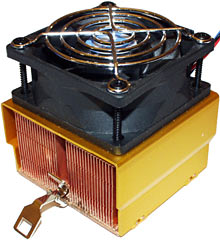
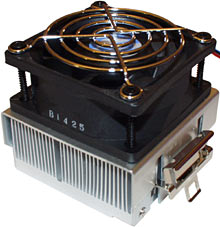
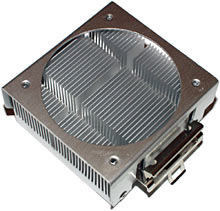
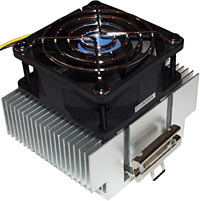
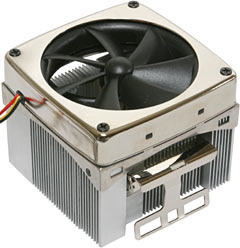
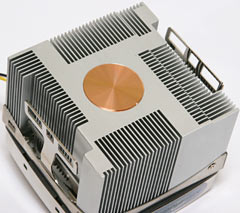
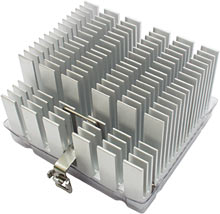
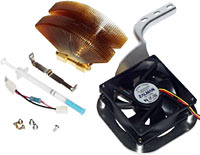
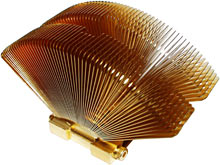
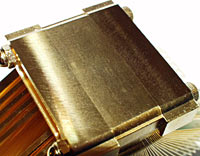

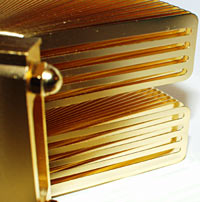
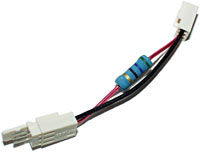
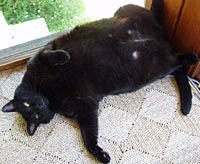
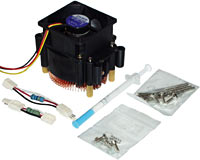
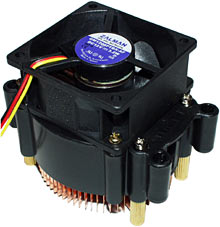
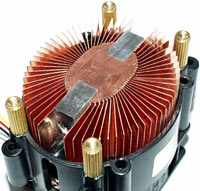
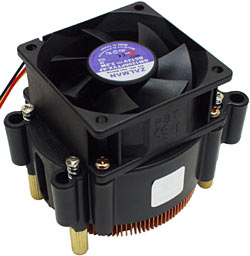
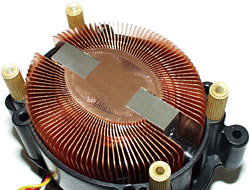
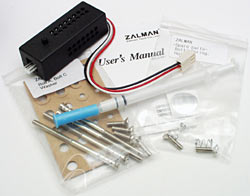
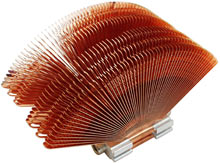
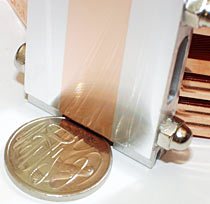
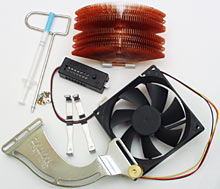
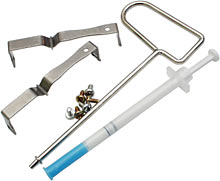
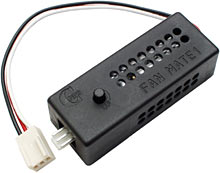
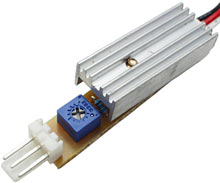
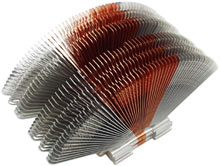

































































































































![[SecureWebs]](images/sw.gif)